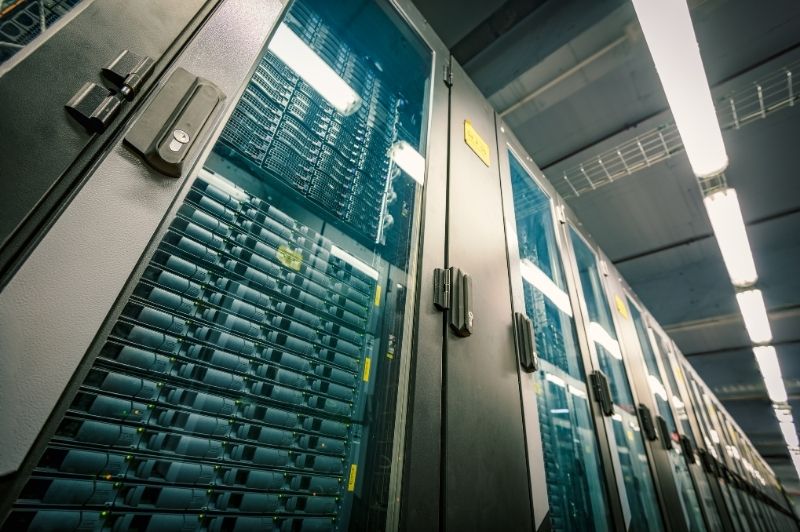while AI data centers are often seen as tools for progress and innovation, they can have serious negative effects on people's lives. From job losses and environmental harm to privacy concerns and community disruptions, the impact is significant. It’s important for us to stay informed and take action to address these issues. By understanding the consequences and advocating for responsible practices, we can help create a future where technology benefits everyone, not just a few. Together, we can work towards solutions that protect our communities and the planet.
Introduction
In today’s technology-driven world, artificial intelligence (AI) is everywhere, from our smartphones to our cars. But behind the scenes, the data centers that power this technology can have serious consequences for people's lives. In this blog post, we will explore how these massive facilities, meant to enhance our lives, can actually lead to job loss, environmental damage, and privacy concerns. Let’s take a closer look at the darker side of AI data centers and how they can genuinely affect communities and individuals.
Steps
Step-by-Step Guide: Understanding the Impact of AI Data Centers on Lives
To grasp how AI data centers can negatively affect people's lives, let's break it down step by step. This guide will help you understand the main areas where these data centers create problems.
Step 1: Recognizing Job Loss
- **Understand Automation**: Many AI data centers use automated systems that can replace human workers. This means jobs that once required people may disappear.
- **Research Local Impacts**: Look into how many jobs in your area have been affected by automation. For example, roles in data entry, customer service, and even manufacturing may decline.
- **Talk to Affected Workers**: Reach out to those who have lost jobs due to AI. Listening to their stories can give you insight into the emotional and financial impacts of job loss.
Step 2: Identifying Environmental Damage
- **Check Energy Usage**: Data centers consume huge amounts of electricity, often generated from fossil fuels. Research how much energy your local data centers use and where it comes from.
- **Explore E-Waste**: Data centers generate electronic waste when old servers and devices are discarded. Investigate how your city handles this e-waste and the potential hazards it may pose to the environment.
- **Understand Water Usage**: Cooling systems in data centers require vast amounts of water. Look into how this affects local water supplies and ecosystems.
Step 3: Evaluating Privacy Issues
- **Learn About Data Collection**: Data centers store large amounts of personal information. Understand what types of data are collected from you, often without your knowledge.
- **Read Privacy Policies**: Companies often have privacy policies that explain how they use your data. Take the time to read these documents to understand your rights.
- **Stay Informed on Data Breaches**: Keep an eye out for news about data breaches. Knowing how often these occur can help you see the risks involved with relying on AI data centers.
Step 4: Observing Local Community Effects
- **Review Economic Disparities**: Data centers can lead to economic changes in communities, like rising housing prices. Look into how this affects the affordability of living in the area.
- **Participate in Community Discussions**: Join local town hall meetings or community forums where residents talk about the impact of data centers. Your voice can help shape future decisions.
- **Advocate for Transparency**: Support initiatives that call for greater transparency from companies operating data centers. More information can lead to better regulations and community awareness.
Step 5: Spreading Awareness
- **Share What You’ve Learned**: Talk to friends, family, and colleagues about the issues related to AI data centers. The more people know, the more pressure there is for companies to change.
- **Use Social Media**: Post articles, infographics, and personal stories related to data centers. Social media can reach a wide audience and spark important conversations.
- **Engage with Local Leaders**: Write to or meet with local officials to discuss the impact of data centers in your area. Encourage them to consider community needs in future developments.
By following these steps, you can gain a deeper understanding of how AI data centers genuinely impact lives, and you can help advocate for change in your community.
Conclusion
In conclusion, while AI data centers are often seen as tools for progress and innovation, they can have serious negative effects on people's lives. From job losses and environmental harm to privacy concerns and community disruptions, the impact is significant. It’s important for us to stay informed and take action to address these issues. By understanding the consequences and advocating for responsible practices, we can help create a future where technology benefits everyone, not just a few. Together, we can work towards solutions that protect our communities and the planet.
